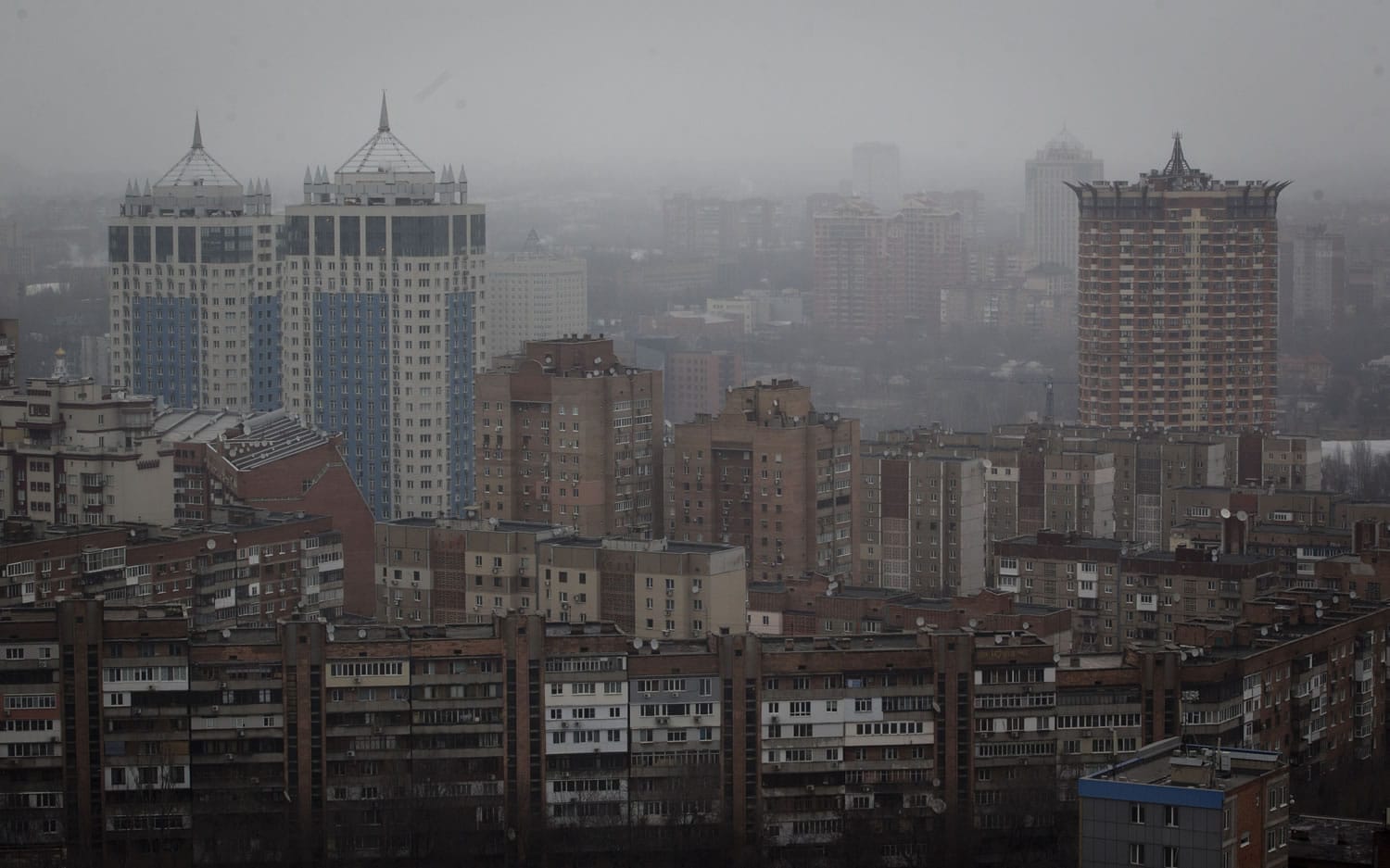DONETSK, Ukraine — In the afternoon, when the shift ends at the coal mine and the miners walk out into the cold and past the old concrete statue of Lenin, they often head to a tiny corner store a block away. There they’ll stand in the parking lot for a while, drinking little bottles of the vodka called “Truthful.”
They know what is happening in Kiev, the capital city that can seem so far away. They’ve seen pictures of the democracy protesters shot dead in Kiev’s streets, and the TV reports on the mansions of ousted President Viktor Yanukovych, the one-time thug and pro-Russia politician who grew up in this far-eastern city. They watched from afar this week as protesters, many from western Ukraine, helped form the country’s new government.
They don’t like it at all.
“I have always felt that we are so different,” said a miner who gave his name only as Nikolai, a thickset 35-year-old who went from high school directly into the mines. People speak Russian across most of Ukraine’s east, and worship in onion-domed Orthodox churches. They were shaped by 70 years of Soviet rule and its celebration of socialist industrialization, and by the Russian empire before that. To them, the government is now being run by outsiders who care little for this side of the country. “If they try to pressure us, our region will revolt.”
His words are echoed — except for a few key words — in a conversation 800 miles to the west, in a medieval cobblestoned city, Ukrainian-speaking residents and houses displaying the EU flag and its yellow stars.
“We are simply different people from those living in the East,” said Ludmila Petrova, a university student in Lviv, a hotbed of support for Ukraine’s pro-democracy forces and opposition to Yanukovych. “They don’t know what the West is. We have a different history. Maybe it is better that we separate once and for all.”
If Ukraine looks neatly delineated on maps, its often-bloody history is a tangle of invasions and occupations, peoples and beliefs. It is a place that has been struggling for centuries to define itself. And now it finds itself so sharply divided — between support for Russia on one side of the country and loyalty to the West on the other — that it often seems more like two countries than one.
On opposite sides of Ukraine, two cities, each of about 1 million people, illustrate that divide.
The eastern city of Donetsk can seem like a cliche of post-Soviet grimness, a place of Stalinist-era apartment blocks, tin-roofed shacks and loyalty to Russia. In the west, Lviv has emerged as a center for Ukrainian artists and writers, a huge draw for European tourists and a city desperate for closer ties to the West. To the fiercest pessimists and extremists on both sides, the cities are already in different nations.
“The country is already separated,” said Ivan Reyko, a 30-year-old factory worker from Donetsk who joined a recent demonstration of about 100 people in the city’s main plaza, Lenin Square, where a 30-foot-tall statue of the Soviet hero gazes proudly toward the horizon. “There is no way back to a united Ukraine.”
A recent series of ominous signs has diplomats warning the region could easily stumble into widespread violence. Among them: military drills just across the border by 150,000 Russian soldiers, and the seizure of the parliament building in the Russian-speaking region of Crimea by unidentified gunmen, who flew the Russian flag and chanted “Crimea is Russia.”
Russian President Vladimir Putin has been long dreaming of pulling Ukraine, a sprawling country of 46 million seen as the ancient cradle of Slavic civilization, closer to Moscow. In Lviv, though, a bookish, soft-spoken mayor is dreaming of something else.
Andriy Sadovyi has been a powerful symbol of resistance to Yanukovych, as well as regional powerbroker who cut ties to the central government even before the president was forced from power. Sadovyi, who insists he only wants regional autonomy in Ukraine, has called repeatedly for unity.
“Ukraine is strong only if it is united,” he said a couple days after Yanukovych fled the presidential compound. “Any division would destroy Ukraine.”
Modern Lviv sees itself at the core of Ukrainian hopes for a more open, democratic government. But the area, once part of neighboring Poland and long a wealthy agricultural region, also saw the rise of a series of nationalist movements in the 1930s. When Germany invaded Ukraine during World War II, some residents cooperated with the Nazi occupiers, who were seen as liberators from the hated Soviets. Tens of thousands of the region’s Jews disappeared into Nazi camps or were gunned down in their homes by death squads.
When the war ended, Moscow exacted its revenge: nationalist fighters who fought Red Army soldiers were purged and sent to prison gulags, along with Roman Catholic and nationalist leaders who could challenge Russian authority. The city was transformed from a cosmopolitan center into a decaying backwater. When the Soviet Union collapsed in 1991, political groups from Lviv were key in fighting for Ukraine’s independence.
For two decades, anti-Russian feelings quietly burned across the region, along with anger at Yanukovych. Even today, thousands of people in western Ukraine, a handful even wearing Nazi-themed uniforms, hold rallies every year honoring men who fought Stalin’s forces during World War II.



